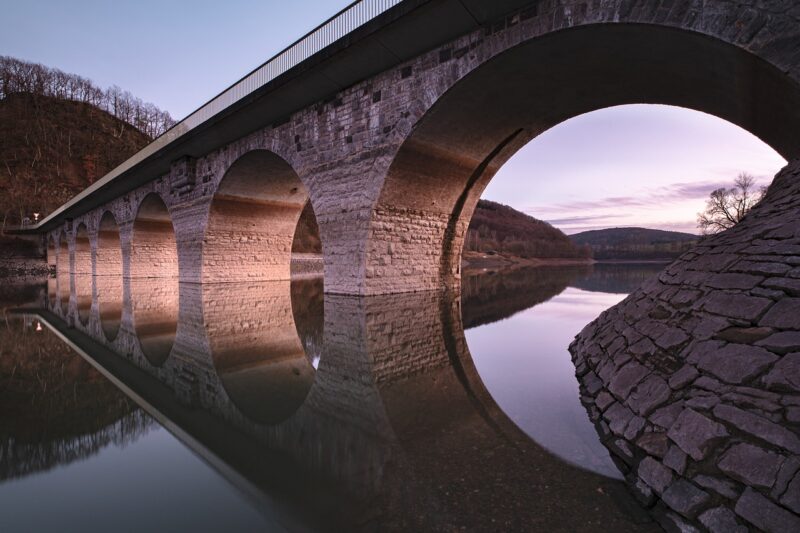The Engineering Behind Bridges That Connect Countries and Continents
November 12, 2024

Bridges have an undeniable importance in the infrastructure of our world. Not only do they facilitate the movement of people and goods, but they also symbolize connectivity, progress, and innovation. The engineering behind these monumental structures is a blend of science, art, and mathematics aimed at bridging geographical gaps that separate nations and continents. In this article, we will delve deep into the fascinating world of bridge engineering, exploring the various types of bridges, their history, and the cutting-edge techniques that engineers utilize to design and construct these feats of human ingenuity.
1. A Brief History of Bridges
The history of bridge construction can be traced back thousands of years. The earliest bridges were simple wooden structures built by ancient civilizations, allowing the passage over small rivers and streams. Over time, as civilizations advanced, so did bridge engineering.
- Roman Aqueducts: The Romans created impressive aqueducts to transport water, showcasing innovative engineering techniques that included the use of arches.
- Medieval Bridges: In medieval Europe, bridges became more focused on aesthetic appeal and often featured ornate designs, like the famous Ponte Vecchio in Florence, Italy.
- Industrial Revolution: The 18th and 19th centuries saw the birth of iron and steel as primary materials for bridge construction, leading to revolutionary designs such as the Iron Bridge in England.
Today, advanced materials and design principles have enabled engineers to create some of the longest, highest, and most visually stunning bridges in the world.
2. Types of Bridges
Bridges can be categorized into several types, each suited to different environments, purposes, and aesthetics. The primary types include:
- Beam Bridges: The simplest and most common type, consisting of horizontal beams supported by vertical posts. These are typically used for short spans.
- Arch Bridges: The design uses a curved structure that provides excellent weight distribution. The Sydney Harbour Bridge is a prime example.
- Suspension Bridges: These use cables suspended between towers to hold up the bridge deck. Iconic examples include the Golden Gate Bridge in San Francisco.
- Cable-Stayed Bridges: Similar to suspension bridges, but with cables extending directly from towers to support the deck. The Russky Bridge in Russia is an example.
Each type comes with its advantages and challenges, dictating the materials, technologies, and techniques used in construction.
3. The Engineering Process Behind Bridges
The engineering process for a bridge involves numerous stages, each requiring a high level of expertise and collaboration among architects, structural engineers, and construction teams.
- Feasibility Studies: This initial stage assesses the technical and financial viability of the project. Surveys are conducted to gather information about the terrain, geology, and hydrology of the site.
- Design Phase: Engineers create detailed designs, including computer models, structural calculations, and construction methods. Advanced software tools like CAD (Computer-Aided Design) and FEM (Finite Element Method) are often employed to visualize the structure in 3D.
- Material Selection: Choosing appropriate materials is critical for the longevity and sustainability of the bridge. Common materials include steel, concrete, and composites, assessed for factors like strength, weight, and resistance to environmental elements.
- Construction Techniques: Engineers and construction teams must implement innovative techniques to build bridges efficiently and safely, such as modular construction and innovative scaffolding systems for massive spans.
Every phase of the process requires careful planning, risk management, and compliance with safety regulations.
4. Surveying: The First Step in Bridge Engineering
Before construction can begin, surveying of the land is essential. Surveyors use a combination of advanced technologies to create topographic maps and assess potential locations for bridge placement. Techniques include:
- Geographical Information Systems (GIS): This technology captures, stores, and analyzes spatial and geographic data, aiding in planning the bridge’s location in the context of existing infrastructure.
- LiDAR Surveying: Light Detection and Ranging (LiDAR) uses laser beams to make high-resolution maps of natural landscapes, critical for determining elevation changes, potential flood zones, and other geographic factors.
- Soil Testing: Evaluating soil conditions provides insight into the necessary foundation requirements to ensure stability and safety.
These surveys greatly influence the design and construction phases, affecting everything from material selection to expected load capacities.
5. The Role of Technology in Modern Bridge Engineering
Technological advancements have drastically transformed the bridge engineering landscape over the past few decades. Some of the key technologies include:
- Building Information Modeling (BIM): BIM creates digital representations of physical and functional characteristics of the bridge, assisting stakeholders in visualizing and modifying designs before construction begins.
- Smart Sensors: Engineers now incorporate sensors that monitor a bridge’s health, assessing structural integrity and detecting potential stresses or damages in real time.
- Robotics and Drones: These tools are increasingly used for inspection and maintenance, allowing for earlier fault detection and reducing the risks associated with manual inspections on large-scale structures.
The integration of these technologies ensures that modern bridges meet safety standards and can withstand natural forces like wind, earthquakes, and heavy traffic loads.
6. Environmental Considerations in Bridge Construction
As environmental concerns grow, engineers are tasked with incorporating sustainable practices into bridge construction. Environmental considerations include:
- Impact Assessments: Before any construction begins, an environmental impact assessment is conducted to understand the potential effects on wildlife, plant life, and water sources in the area.
- Use of Sustainable Materials: Engineers are increasingly opting for eco-friendly materials such as recycled steel and sustainably sourced timber to reduce the environmental footprint.
- Wildlife Corridors: Designing bridges that allow for wildlife passage beneath them helps minimize habitat disruption, promoting biodiversity.
These considerations not only protect local ecosystems but also enhance the bridge’s acceptance in the communities they serve.
7. Notable Bridges Connecting Countries and Continents
Across the globe, several bridges serve as remarkable symbols of engineering prowess. Here are a few notable examples that connect countries and continents:
- The Akashi Kaikyō Bridge (Japan): Holding the title of the longest suspension bridge in the world, it connects the city of Kobe to Awaji Island.
- The English Channel Tunnel (United Kingdom to France): An underwater rail tunnel that links the UK and France, incorporating three tunnels and several extraordinary engineering solutions.
- The Øresund Bridge (Sweden to Denmark): A combined road and rail bridge that includes an underwater tunnel, creating a unique conjunction of road and rail travel between two nations.
These bridges not only facilitate transport but also represent milestones in engineering and design, sparking economic growth and cultural exchange.
Conclusion: Bridging the Future
As we look ahead, the need for more sustainable and resilient infrastructure systems continues to grow. With innovative materials, improved design methodologies, and a more profound commitment to environmental protection, the future of bridge engineering holds promise. These structures will continue to make a significant impact on how we travel, trade, and connect in an increasingly interdependent world. Whether they are short footbridges or massive suspension bridges spanning thousands of kilometers, these feats of engineering will always remind us of our quest to bridge distances, both literal and metaphorical.






